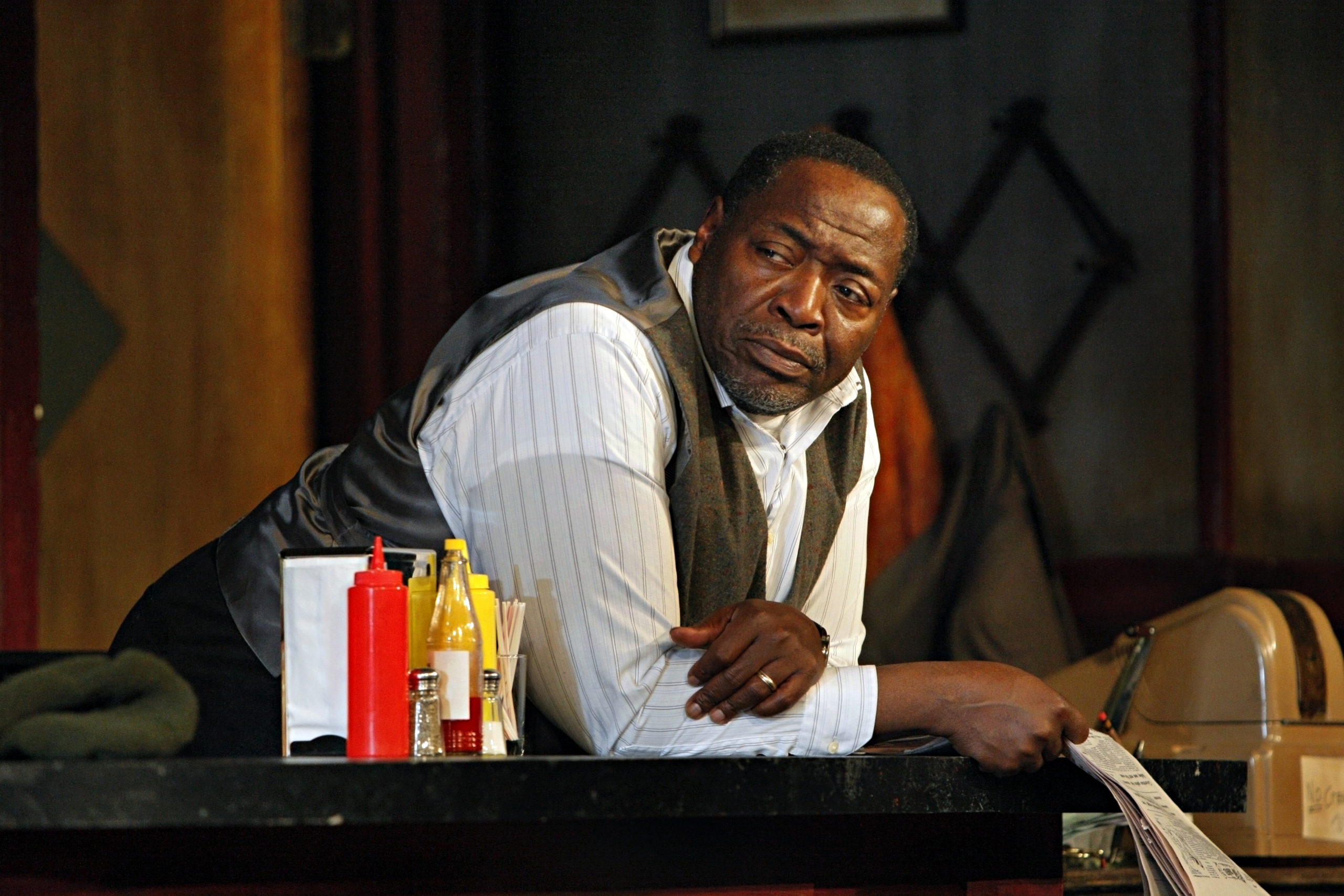New Jersey
Two Trains Running is a great history lesson for Black History Month
Ruben Santiago-Hudson and familiar faces return to the Two River Theater to showcase an award-winning play by August Wilson.

Two Trains Running is a perfect piece at the Two River Theater as we celebrate Black History Month.
The theater brought back a slew of familiar faces including Ruben Santiago-Hudson to direct this award-winning play by August Wilson.
About Two Trains Running
Two Trains Running is the seventh in Wilson’s ten-part Pittsburgh cycle which highlights and celebrates the African American experience in the 20th century. Throughout the Pittsburgh Cycle, Wilson captures everyday living for African American men and women, and highlights history around it.
Set in The Hill District in Pittsburgh, PA in the 1960s, Two Trains Running defines a decade most known as the civil rights era, through powerful individual characters.
The story revolves around Memphis (Chuck Cooper), the owner of a small restaurant, who fights to get a fair price for his building because he’s become a victim of eminent domain. He is adamant about getting $25,000 for his building and will not accept anything less. As the play progresses, you’ll come to realize the restaurant is not just a place to come eat, but a place of solitude for Black patrons to shield themselves from their daily struggles and harsh realities in the outside world. And for African Americans, it meant the battle for equality and civil rights.
The play begins with restaurant patrons learning about the death of Prophet Samuel, a popular wealthy evangelist. His death is the talk of the town.
At this time, the audience is introduced to Aunt Ester, a mythical figure who is more than 300 years old. She is known for dishing out wisdom and insightful advice from behind the door of her home. More importantly, Aunt Ester is seen as a revered figure who helps people get out of situations because of her advice.
You will never forget the individualistic powerful characters Wilson created in Two Trains Running
First, let me introduce you to Hambone.
When Hambone makes his first appearance, he yells “I want my Ham”. At first, you would think there is something comical about Hambone as he yells he wants his ham. But as the play progresses, Hambone proves to be more than a man yelling for his ham. His character will be a walking history lesson and you will realize the ham is a symbolization and embodiment of disparity and racism in the 1960s.
Wilson gives viewers individualistic characters that shape and mold the play.
There is Wolf, played by John Earl Jelks, who is a smooth talking brotha who places bets on the next day lottery numbers – the only way to make income in a racially charged and high unemployment era.
Then there’s Holloway, played by James A. Williams. Holloway sits at the same table, drinks the same coffee, and eats the same toast everyday. He stands out as the voice of reason.
West, played by Harvey Blanks, the town’s wealthy undertaker, tries to convince Memphis to sell his property to him for $20,000 because he insists “those white folks won’t give Memphis anything more”.
The twist in the mix comes with Sterling, played by Owison Odera. Sterling is an energetic yet passionate young man who was just released from prison for robbing a bank. It is Sterling’s take charge attitude that stirs up the group to take action for change and equality, or at least think about it.
And then there’s Risa, played by Roslyn Ruff. Risa is the object of lust for Wolf and Sterling. She is very guarded, has marks on her legs, and lags around the restaurant. Just like Hambone, you too would think something is wrong with her. But Risa’s actions, as well, will prove to have meaning as she builds a character of independence and power, showing empathy towards Hambone.
In the beginning, it would seem Hambone is nothing but a mere joke and a out of control person yelling for his ham. “I want my ham, I want my ham” he says.
See, Hambone painted a fence and in return he was to receive a ham but instead he got a chicken. Hambone thinks his work warrants him to have a ham, and so he wanted his ham. Hambone’s character is going to constantly remind you, you should have that ham, too. Wilson uses this vivid character, that will ask yourself is something better than nothing? It is Hambone’s determination that drives the message in Two Trains Running. And that is, to never give up on what’s right and fair.
History lesson
In Two Trains Running, August Wilson’s draws up a great history lesson while also highlighting how the average African American lived during these events.
Wilson stated “This play does not speak to red-lettered events of the sixties .. because at the time all of this was going on, people were still living their lives. ”
Despite the tumultuous times of the civil rghts era, the spirit of Wilson’s characters keep alive hope, change, and to simply keep on living.
Essentially, the lesson here is there are always two trains running. There is life and there is death. “Each of us rides them both”. – Wilson
Do not miss this powerful play that runs until March 3 at The Two River Theater.
For more information, please visit www.trtc.org
Discover more from Unheard Voices Magazine
Subscribe to get the latest posts sent to your email.
-

 Community1 week ago
Community1 week agoMichigan crash claims lives of mother and two children
-

 In Memoriam2 weeks ago
In Memoriam2 weeks agoBeloved Mississippi news anchor Celeste Wilson dies suddenly at 42
-

 Police2 weeks ago
Police2 weeks agoMississippi mother demands justice after teen son fatally struck by a police cruiser
-

 Black And Missing6 days ago
Black And Missing6 days agoSearch intensified for missing Maryland teen Dacara Thompson
-

 Community1 week ago
Community1 week agoGoFundMe launched for viral flight hero “Linebacker17C” after midair takedown
-

 Black Excellence1 week ago
Black Excellence1 week agoMississippi teen begins college journey at just 16, majoring in Electro-Mechanical engineering
-

 Social Justice2 weeks ago
Social Justice2 weeks agoSouth Carolina man shot in alleged hate crime speaks out and pushes for change
-

 Social Justice1 week ago
Social Justice1 week agoNevada School District Pays $60K to Settle Racial Discrimination Lawsuit Over Cafeteria Worker’s ‘Black Voice’



























